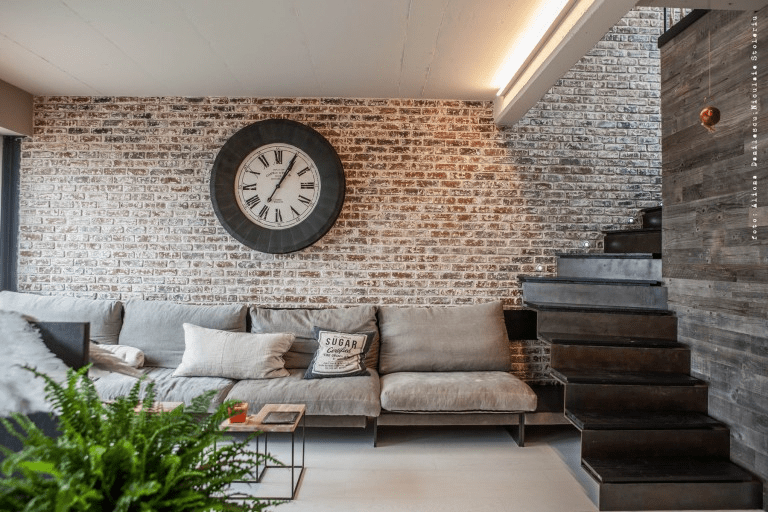If you are looking for exterior wall cladding, there are many options, including stone, wood, composite, and aluminum. Stone cladding is durable and energy efficient. Timber and composite cladding are aesthetically pleasing. Aluminum cladding is also energy efficient. So, in addition to durability and aesthetics, aluminum cladding is also energy-efficient.
Stone cladding is durable.
If you consider installing stone cladding on your home, you should know that this material is incredibly durable. These thick slabs of natural stone can last decades and resist rust and corrosion. In addition, stone wall cladding can withstand the elements of any climate, including extreme heat and cold, which reduces heating costs.
In addition to its durability, stone wall cladding can also look incredibly beautiful. It is also low maintenance, requiring little more than a quick wipe-down with a sponge and water. You can use dish soap or a mix of white vinegar and water to clean stone walls. This is the most accessible and affordable way to maintain your stone wall cladding. Listed below are some of the most popular stone types for cladding.
Wood cladding is energy efficient.
The benefits of timber cladding are numerous. In addition to ensuring a contemporary aesthetic and visual story, wood has a shallow carbon footprint compared to other traditional building materials. Because it uses less energy to produce, wood is environmentally friendly compared to steel and aluminum. Wood is also an excellent insulator, averaging 15 times more effective than these materials. Furthermore, it can be reused and recycled, leaving no waste behind.
Timber cladding can be highly recycled and is also highly resistant to weathering. When compared to other cladding materials, timber requires moderate maintenance. The wood will naturally weather to a silver hardwood finish if left raw. These cladding materials use natural timber resins, which are non-toxic substances. Furthermore, the charred timber is made under high pressure and temperature, so it is highly resistant to rot and decay. While the burnt wood used by the ancient masters is primarily cypress, modern charred timber cladding uses pine, spruce, and Accoya. The charred timber cladding method has a wide variety of patterns and colors to offer.
Composite cladding is aesthetically pleasing.
The most apparent benefit of composite wall cladding is durability and low maintenance. It is resistant to UV and insect damage, making it the perfect choice for exterior cladding; hybrid sites are environmentally friendly and can last for decades with minimal maintenance.
Compared to other materials like brick and cement, composite wall cladding is easy to maintain. It is completely covered in a protective polymer shield, which ensures long-lasting performance. The only maintenance required is a wipe-down now and then. Additionally, it is aesthetically pleasing, which means your home will be more valuable in the long run. Aside from its beauty, composite wall cladding is also an excellent choice for those concerned about the environment.
Aluminum cladding is energy efficient.
Many modern building materials use aluminum composite panels as their wall cladding systems. This combination of aluminum and plastic provides excellent sound insulation, a durable surface, and the ability to retain their original shape. Additionally, these materials do not burn, making them an environmentally-friendly choice. The panels can be finished in wood patterns or other sustainable materials. However, it would help if you kept in mind that these panels are unsuitable for insulation in cold climates.
The most important benefits of aluminum wall cladding are its versatility, strength, and durability. They can be crafted into various shapes and are highly durable. Another advantage of aluminum wall cladding is that it is entirely recyclable. Modern manufacturers recycle aluminum composite panels to produce new panels. Therefore, this material has the potential to help the environment while helping the building owner save money in the long run. And the best part? The aluminum cladding has a lower cost than many of its alternatives.
Tile cladding is durable.
There are many advantages of using tile cladding for your home‘s exterior and interior walls. Aside from being durable, tiles can look great. Choose from various sizes and textures to create the look you desire. However, several factors can affect the cost of this type of cladding.
If you are concerned about how easily tiles can scratch or get chipped, choose a natural stone cladding option. These materials are naturally resistant to stains, water, and dirt.
Vinyl cladding is energy efficient.
There are several benefits of vinyl wall cladding for the exterior walls of your home. First of all, it is much cheaper than bricks and mortar, and therefore it makes for a more sustainable choice than bricks. Second, it doesn’t fade like other materials and is highly corrosion-resistant. Finally, it doesn’t need to be repainted or repaired. All that’s required is a simple wipe-down once in a while to keep it looking like new.
Lastly, vinyl wall cladding contributes to the sustainability of the environment, producing very little waste during the manufacturing process and installation. It also contributes less to global warming than other cladding materials, using half the power and fuel. This, in turn, makes your home more comfortable year-round. And finally, energy efficiency is an essential part of home improvement. But what are the advantages of vinyl wall cladding?

